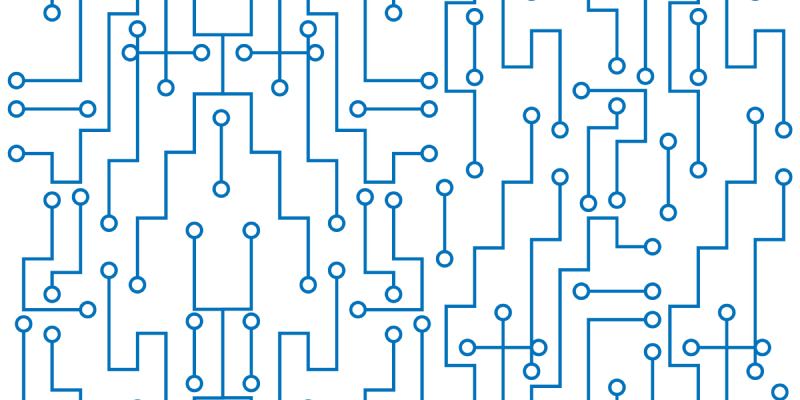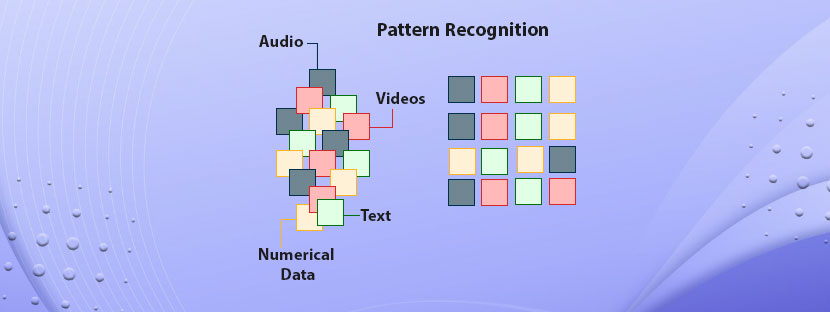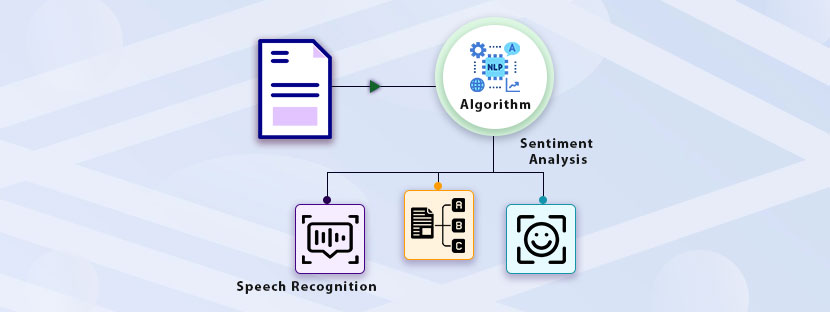Do you use Face ID to unlock your phone? Or do you use the fingerprint sensor? You may be using any of these methods and experiencing the finest benefits of pattern recognition. Artificial Intelligence (AI) installed in your phone uses pattern recognition techniques to provide you with these features. So, if you want to know how does ai use pattern recognition, you need to dig deeper into this.
Let this blog help you explain how AI uses pattern recognition with some examples of real-life industrial applications.
What is pattern recognition?
Anything that comes in repetitive order has patterns of repetition. Using the same logic, in machine learning, pattern recognition is a task to identify things that show repeated behaviors. Pattern recognition has a wide range of applications, from images to audio. Machine Learning (ML) algorithms can identify patterns in texts, audio, videos, and numerical data.

In pattern recognition, machine learning models are fed with a wide range of databases. These databases contain training data. For example, if the ML algorithm is prepared to develop a facial recognition system, then the training data would be contained images of human faces, that too, annotated ones. When the ML algorithm gets enough training data, the system will become capable of identifying human faces accurately.
How does AI use pattern recognition?
Predominantly, there are two methods that help machines recognize patterns, which are
Statistical Pattern Recognition: StatPR, or Statistical Pattern Recognition technique, widely uses intensive statistical studies to detect patterns. This method helps create data clusters to process and train datasets.
Syntactic Pattern Recognition: SyntPR or Syntactic Pattern Recognition helps recognize complex patterns with a hierarchical perspective. This method is far more structural and suitable for complex pattern detection.
Well, apart from the two main AI pattern detection methods, there is a different process that exists, which is named Neural Pattern Recognition.
Neural Pattern Recognition: This method recognizes patterns using AI neural networks, which look as well as function like the human brain.
In real-life scenes, a combination of all three methods works. Because no single technology can work at the optimal level to solve a complex problem. Developers of AI technology always take a hybrid approach when it comes to pattern detection.
Components of a Pattern Recognition System
Organizations across the world are now expecting meaningful outcomes from Artificial Intelligence, especially Generative AI. Well, pattern recognition in ML models is a technique that helps generate value-driven outcomes. The pattern recognition system in AI is quite wide and has different components, such as;
Data Collection: It’s the first and foremost component where relevant data is getting collected from raw sources. After collection, the data is directly shifted for processing.
Pattern Extraction: This process involves identifying the underlying features of the data and patterns. This process highlights the overall data structure to extract patterns from datasets.
Data Classification: Patterns get labeled in this process once identification is done.
Data Labeling: Each pattern will get its respective labels based on the features it shows. Human annotators will label to datasets here.
Post-Processing Analysis: This process involves refining the labeling and classification. It checks the accuracy level of the data processing.
How does AI use pattern recognition across industries
Pattern recognition is a common and widely used technique in the machine learning process. Therefore, you can find the applications of this technique across industries. From healthcare to fintech app development, pattern recognition sets the base of ML/AI algorithms. Let’s discuss how AI systems use pattern recognition across various industries here.
Healthcare
ML models are trained with patient data in a conventional way using pattern recognition techniques. The ML algorithms are trained with medical imaging to detect patterns in these images. Therefore, it helps the machine to identify anomalies like tumors when the system has recognized enough patterns using the X-ray, MRI, and CT scan data.
Apart from medical imaging pattern detection, ML models can predict diseases after analyzing patient data, especially high-risk medical profiles. Also, it can suggest personalized treatment plans based on the available data.
Finance
Incidents of fraudulent transactions have gradually increased over the years. Fraudulent activities leave a track on the system, which can be traced back to prevent future incidents. Pattern recognition techniques help the ML algorithms analyze historical transaction data. Thus, it can help the ML models to identify anomalies and flag suspicious activities in transaction-related activities in real-time. Besides fraud detection, pattern recognition supports credit scoring, stock price prediction, assessing financial risks, verifying investment plans, and various other financial activities. Moreover, it helps the machine assess large sets of financial data, identify suitable trending strategies, recommend investment plans, mitigate credit risks, and more.
Manufacturing
In production lines, finding irregularities that lead to production breakdown is essential and important. Here, feeding the ML algorithms with historical data can help machines to forecast breakdowns. Plus, machines can suggest preventive actions to reduce downtime. Pattern recognition is the technique that helps find defects on production lines and flag inconsistencies immediately. It can work with high-quality cameras to check and manage the production system autonomously.
Transportation
With the help of bounding box data annotation, machine learning models can now help drive cars autonomously. The core technology behind this development is pattern recognition. It’s a combination of machine learning and computer vision that helps vehicles move on the roads freely without any human supervision. Plus, pattern recognition learning also helps the ML model in traffic management. It helps to predict traffic congestion, optimize traffic signal timing, and take other road safety measures.
Retail
The application of AI systems in the retail sector is wide. From production management to supply chain, you can check AI everywhere. ML algorithms, with the help of pattern recognition, help retailers to forecast demands, asses customers’ buying patterns, measure fluctuations, manage inventory levels, and many more things. It recognizes patterns from purchase history and customers’ browsing behaviors.
Security
Detecting suspicious activities in live footage is possible with the help of security pattern recognition. It can help ML algorithms detect unusual movements in the video frames and then alert security personnel in real-time. Apart from video surveillance, pattern recognition in AI helps validate biometric data with complete accuracy and validation.










